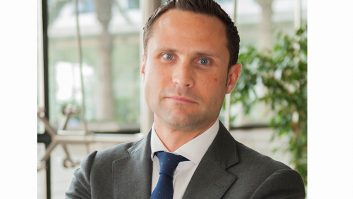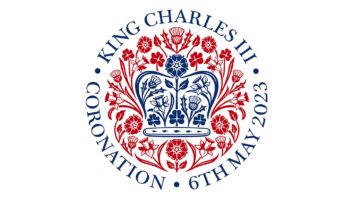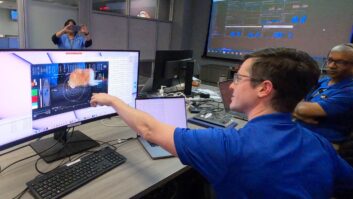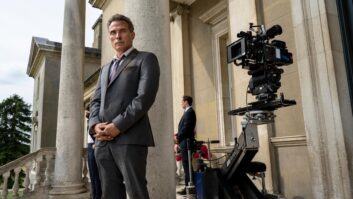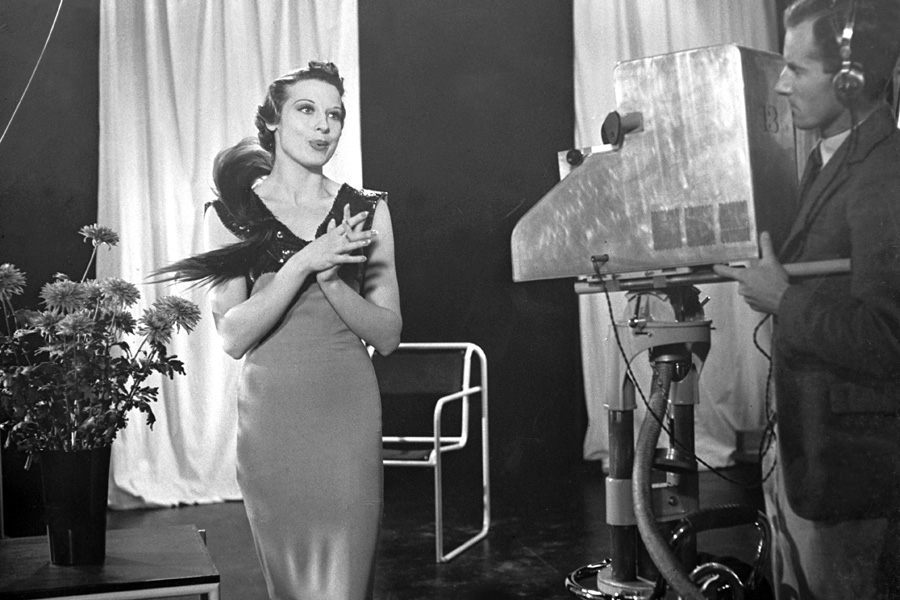
Let’s face it; early descriptions of television were not very complimentary. Philo Farnsworth, credited with creating the first fully electronic system, is reported to have said to his wife during the couple’s honeymoon in 1926 “There’s another woman in my life, and her name is Television.”
Two years later, C P Scott, editor of The Manchester Guardian newspaper, declared, “Television? The word is half Greek and half Latin. No good will come of it.”
Then, in 1934, Isaac Shoenberg, another of television’s pioneers, uttered the historical words, “Well gentlemen, you have now invented the biggest time waster of all time. Use it well.” The occasion was the successful demonstration of electronic television.
Despite these unhelpful comments, two years later, the first public high definition television programming began when the BBC launched a service from Alexandra Palace in north London on 2 November 1936. But that is getting ahead of the story.
Pioneering 20s
The BBC – the British Broadcasting Company – was founded in 1922 by a private consortium of six radio manufacturers to stimulate the sales of radio sets. Five years later, it became the British Broadcasting Corporation under the stewardship of John Leith.
It was in 1929 that the BBC first became involved in the development of television. John Logie Baird convinced the corporation to allow him to use the London radio transmitter – which was unused from late evening to mid-morning the following day – to experiment with his mechanical scanning system. The key to the system was a large spinning disc consisting of a spiral of holes around the circumference. Light passed through these holes to reach a light-sensitive photocell. In this way, the image to be televised could be scanned and broken into the 30 lines transmission format. By the end of the year the Scotsman was producing regular broadcasts, which would run over the next six years.
Initially, though, there was a serious hurdle. Television requires two transmitters – one for sound, one for vision – but there was only one transmitter operating at the BBC’s London site. As a result, these early ‘programmes’ involved two minutes of picture, followed by two minutes of sound – a sequence that repeated during each broadcast. Sorry, nothing new about audio delays!
The following a year a second transmitter was commissioned, and both picture and sound could be broadcast together, and in the late spring of 1930, the first television play was transmitted. The Man with a Flower in his Mouth was selected because it required just three characters, contained a good number of long speeches and demanded very little action. The actors, who wore a bizarre blue and yellow make-up to accommodate the deficiencies in the 30-line system, slid into a static seat in front of the single camera at the appropriate moment to deliver their lines.
These early broadcasts originated in Baird’s own studio in London’s Covent Garden, but by the end of 1932 the BBC had built a studio in the basement of Broadcasting House and took over programme making. This meant that regular daily transmissions were now practical, and these programmes were watched by several thousand enthusiasts who had bought the forerunner of today’s receivers – Baird Televisors. These programmes continued until 1935, when the system was shut down to prepare for the launch of the first regular ‘high-definition’ service in November 1936.
Electronics emerge
While all this was progressing, an electronic system was being secretly developed by Marconi-EMI. Towards the end of 1932, EMI had revealed to the BBC a five inch-square CRT receiver capable of receiving 150-line mechanically generated transmissions. However, at that time the system was only capable of telecine operation.
A further development allowed EMI to demonstrate a 120-line all-electronic system to the BBC. However, those early electronic transmission demonstrations were disappointing. Their mechanical transmission system was transmitting at 180 lines and the electronic images, initially, were not as good.
But by April 1934, it had significantly better results. EMI built a vision mixer with six channels – two telecine and four Emitron cameras. This allowed the company to locate cameras both in its studio and outside its Hayes factory – and provide a telecine input for a demonstration to the BBC.
Alongside the work of the engineering staff, credit must go to those early electronic camera operators. The cameras had optical viewfinders, meaning that the images were upside down. When a person moved to the left, the image appeared to show action to the right. When a person stood up, the image moved down in the viewfinder. It was quite a challenge. It is also reported that early vision mixers had a two and a half second delay between fading up a camera source to the action actually taking place.
Preparing for launch
Meanwhile, a government committee had decided that the Baird mechanical system – now upgraded to 240 lines – should be tried against an electronic 405 line format developed by Marconi-EMI. After a six-month trial, a decision would be taken as to which would become the permanent format.
While the rivals honed their respective systems, the BBC searched for a suitable site for studios and a dedicated television transmitter. Although not its first choice, the iconic Alexandra Palace was selected. One significant advantage was the fact that it was on top of a 300-foot (90-metre) hill. Engineers had decided that to ensure broadcasts could be viewed within a range of 25 miles using a 34 thousand watt transmitter, the aerial had to be 600 feet (180 metres) above sea level. Opting for Ally Pally (as the site became affectionately known) meant that a tower of just 300 feet (90 metres) was needed.
The 55,000 square feet section of Ally Pally leased by the BBC was not in the best state of repair. Desmond Campbell, a lighting engineer for the corporation, is said to have “found an old tyre, no roof, no doors and I could see the sky. The smell of cat in the old banqueting rooms nearly made me sick and the whole thing looked the most dreadful mess.”
To overcome the mess, conversion work began in early 1935. It was truly pioneering work. After all, no high-definition TV studio existed in the world from which experience could be drawn.
Change of schedule
Although the official opening date had been set for November, the BBC came under considerable pressure to produce demonstration transmissions some three months early and beam them to the Radio Show at Olympia. That would enable manufacturers displaying their latest products at the event to convince the public it should purchase these new television receivers. Manufacturers were rightly concerned that with nothing to show on the screens, there would be few takers for this new piece of living room furniture.
As a result, a variety show was hastily compiled. Titled Here’s Looking At You, and produced by Cecil Madden, it was transmitted twice a day for two weeks, with the competing systems alternating on a daily basis. The Baird mechanical system had to make do with one camera to record the show. On the other hand, the electronic studio would make use of two mobile and one fixed camera.
To be precise, Baird Television employed two systems. Central to both was a ‘flying spot scanner’. Here, the scene was scanned with a spot of light, while photocells collected the light reflected back from the subject. However, the scanner was extremely sensitive to red light, so when an announcer appeared in the appropriately named ‘Spotlight Studio’, he or she required a special make up that comprised black lipstick and blue eye-shadow placed on a pale face.
The variety show was broadcast in the main studio, where the Intermediate Film Technique was employed using a conventional film camera to record the action. The film then passed through the developer and a highly-poisonous cyanide-based fixer. The resultant image was scanned, with the flying spot under water. It was soon obvious that the far less cumbersome electronic system was easier to control.
That initial burst of activity over, preparations could resume for the regular service, which started at 1500 hours on 2 November. The opening ceremony actually took place twice – first on the Baird system in Studio B and then in front of Marconi-EMI cameras occupying Studio A. Even in 1936, repeats were the order of the day!
It is estimated there were around 20,000 homes with a television (ten inch screens were the norm) within a 35-mile range of Alexandra Palace. That was a good number, considering those first receivers cost about £100, the same price as a small family car!
Programming
After the opening ceremony, there was an interval of five minutes followed by a ten-minute edition of British Movietone News.
At 1530, a 30-minute variety show featuring musical comedy star Adele Dixon, comedians, Buck and Bubbles, jugglers, The Lai Founs and the BBC Television Orchestra was aired. This programme was directed and produced by Dallas Bower who, like many of the BBC’s early recruits to the new service, had come from a career in films.
Bower is credited in some sources as the originator of drawing up studio floor plans for live broadcasters to enable camera moves to be plotted in advance.
At 1600 hours, transmissions closed down until 2100, when a further hour of programming commenced, including a film about the launch of the TV service, Picture Page, and a rerun of the British Movietone News.
The following day saw another two hours of programming split into two segments. The programmes included a display by champion Alsatians from the Metropolitan and Essex Canine Society’s Show, and The Golden Hind, in which a bus driver describes how he built a model of Drake’s famous ship.
Interestingly, in those early days, television actors were paid less than those on radio. The reasoning was along the lines that radio had a bigger audience and that television only showed the actors in miniature.
Baird abandoned
It soon became clear that the electronic system was far superior and the decision was taken after just three months to drop the Baird mechanical format. Its last transmission was at the end of January 1937.
One distinct advantage of the electronic system was the ability to use its more mobile cameras in an outdoor location. Despite the infancy of the television service, an impressive number of Outside Broadcasts were transmitted in the first two years or so. For example, two cameras were employed to enable viewers to watch a part of King George VI’s Coronation Procession in May 1937. Despite showing a very small section of the event, it took eight miles of cable to feed the camera signals back to base. Other OBs included a visit to Wimbledon a month later and the FA Cup Final in April 1938.
Obviously, resources were limited and when the 1938 Oxford and Cambridge Boat Race was televised, only the finish could be shown. But necessity is the mother of invention, and for most of the race, viewers saw the announcer in the studio moving models along a representation of the course!
Development in television production had come a long way in those early years, but that progress came to halt as Europe prepared for war. On 1 September 1939 at around 1215 hours – after a Disney cartoon – the transmitter at Alexandra Palace was shut down. The service would not be resumed until June 1946.
Of course, there have been monumental leaps in technology since that time.
Without television we wouldn’t see history being made – live. Moon walks, space stations, human endurance under pressure, famine, conflict, life-saving medical procedures.
So, has good come out of it? Is television the biggest time waster ever created? Each has his or her own opinion.
